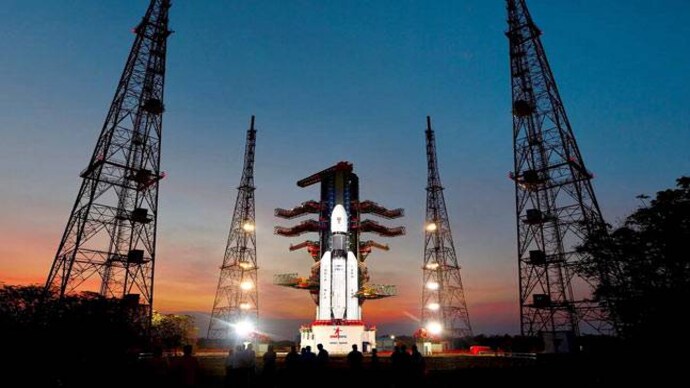ISRO Sets March 2028 Launch Date for Pioneering Venus Orbiter Mission
The Indian Space Research Organisation (ISRO) has announced the target date for the launch of its much-anticipated Venus Orbiter Mission (VOM), scheduled for March 2028. This landmark mission aims to delve deep into the mysteries of Venus, exploring its atmosphere and surface. Utilizing the LVM-3 rocket, ISRO aims to push the boundaries of planetary science with this ambitious interplanetary venture.
The Venus Orbiter Mission, approved in the latest Cabinet meeting, is a significant step for India’s space program. ISRO is targeting a specific launch window on March 29, 2028, leveraging its new heavy-lift launch vehicle, the LVM-3. This rocket will place the spacecraft in an Elliptical Parking Orbit (EPO) of 170 km x 36,000 km, with a 21.5° inclination and an Argument of Perigee (AOP) of 178°. The meticulous planning and precise orbital parameters are designed to ensure the spacecraft’s optimal insertion and journey towards Venus.
The orbiter is expected to reach Venus around July 19, four months after its launch. Upon arrival, the spacecraft will undergo a critical phase known as the Venus Orbit Injection (VOI), entering an initial orbit of 500 km x 60,000 km around the planet. Following this, the mission will employ a technique called aerobraking, which will last between six to eight months. This process involves using the friction of Venus’s atmosphere to gradually slow down the spacecraft, reducing its orbit to a low-altitude science orbit of 200 km x 600 km, with an inclination of approximately 90º. This precise maneuvering is crucial for conducting high-resolution studies and in-situ observations.
The planned science orbit will enable the VOM to carry out a comprehensive study of Venus’s surface and atmosphere over its five-year mission duration. The data collected will include high-resolution images of the planet’s surface, detailed atmospheric compositions, and ionospheric measurements, providing invaluable insights into Venus’s geological and atmospheric processes.
The Venus Orbiter Mission (VOM) is designed to address several key scientific objectives:
1. Atmospheric Exploration: The VOM will focus on understanding the thick and toxic atmosphere of Venus, composed primarily of carbon dioxide with clouds of sulfuric acid. By analyzing the atmospheric composition, dynamics, and thermal structure, the mission aims to uncover the processes governing Venus’s weather and climate.
2. Surface and Subsurface Analysis: The orbiter will utilize advanced imaging and radar techniques to study Venus’s surface and subsurface structures. This will help in identifying the geological history, volcanic activity, and tectonic movements on the planet, providing clues about its evolution and potential similarities to early Earth.
3. Solar Interaction: The mission will investigate the impact of solar activity on Venus’s atmosphere. Understanding how solar wind and radiation interact with the planet’s atmosphere will shed light on the atmospheric escape processes and the long-term climatic changes on Venus.
4. Planetary Evolution: Venus is considered a key to understanding planetary evolution. Despite its harsh conditions today, Venus might have once had a climate similar to Earth’s. By studying Venus, scientists hope to learn more about the factors that lead to such divergent evolutionary paths for the two planets.
The mission, with a budget of ₹1,236 crore, allocates ₹824 crore specifically for the spacecraft’s development. ISRO’s commitment to managing both the spacecraft’s development and the launch underscores the organization’s dedication to advancing space science and technology.
The successful implementation of the VOM will position India at the forefront of planetary exploration, joining the elite group of space-faring nations that have ventured to Venus. This mission follows the successful Mars Orbiter Mission (Mangalyaan), highlighting ISRO’s growing expertise in interplanetary missions.
The VOM also opens avenues for international collaboration, with opportunities for global scientists to participate in the mission. Such partnerships can enhance the scientific output and broaden the understanding of Venus through diverse perspectives and expertise.
As ISRO prepares for the 2028 launch, the excitement within the scientific community is palpable. The mission promises to yield unprecedented insights into Venus, potentially rewriting our understanding of planetary science. The meticulous planning, from the launch to the intricate orbital maneuvers, reflects ISRO’s technological prowess and strategic vision.
In conclusion, ISRO’s Venus Orbiter Mission represents a significant leap in India’s space exploration efforts. Scheduled for a March 2028 launch, this mission aims to unravel the mysteries of Venus’s atmosphere and surface, offering critical insights into the planet’s evolution and its parallels with Earth. With a robust budget and strategic planning, ISRO is poised to make groundbreaking discoveries, solidifying its position as a leader in space science. The VOM not only furthers our understanding of Venus but also enhances India’s capabilities in conducting complex interplanetary missions.

